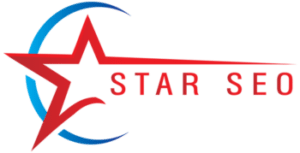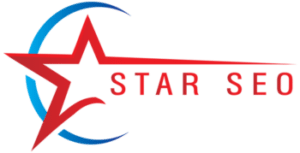Introduction
In the realm of digital marketing, links play a crucial role in connecting web pages and establishing the authority and relevance of a website. Links serve as pathways that guide users and search engine crawlers through the vast online landscape. Understanding the various types of links and their significance is essential for optimizing website visibility, improving search engine rankings, and driving organic traffic. In this article, we will explore the different types of links in digital marketing and their impact on website performance.
Internal Links: Enhancing Site Navigation
Internal links are links that connect different pages within the same website. They are designed to guide users to relevant and related content, ensuring a smooth and intuitive browsing experience. Internal links assist search engine crawlers in discovering and indexing new pages, boosting the overall visibility of a website. Properly implemented internal linking structures can enhance site navigation, reduce bounce rates, and encourage users to explore additional content.
External Links: Building Connections
External links, also known as outbound links, are hyperlinks that direct users from one website to another. They provide additional information, sources, or references related to the content at hand. External links are valuable for establishing credibility, as they demonstrate that the website is well-researched and connected to authoritative sources. Additionally, linking out to relevant and reputable websites can help build relationships with other industry experts, potentially leading to future collaborations and opportunities.
Backlinks: Enhancing Authority and Trust
Backlinks are incoming links from external websites that direct users to your website. They are a vital component of search engine optimization (SEO) and significantly impact a website’s authority and trustworthiness. Search engines consider backlinks as votes of confidence, indicating that other websites find your content valuable and worth linking to. High-quality backlinks from authoritative websites can boost your search engine rankings, increase organic traffic, and improve overall visibility.
Natural Links: Genuine and Organic
Natural links occur when other websites voluntarily link to your content without any explicit request or incentivization. These links are earned based on the merit and quality of your content, and they hold great value in the eyes of search engines. Natural links are difficult to obtain but are highly coveted because they indicate that your content is valuable and relevant within your industry or niche.
Nofollow Links: Controlling Link Juice
Nofollow links are hyperlinks that include a special attribute called “rel=”nofollow,” which instructs search engine crawlers not to follow or pass any authority from the linking page to the linked page. These links were introduced to combat spam and prevent manipulative practices, such as paid link schemes. Nofollow links are commonly used for sponsored content, user-generated content (such as blog comments), and links that you don’t necessarily endorse but include for reference purposes.
Dofollow Links: Passing Link Authority
Dofollow links are the default type of links that pass link authority from one webpage to another. Unlike nofollow links, these links contribute to the overall link profile and authority of a website. Dofollow links are essential for SEO, as they indicate to search engines that your website is connected to valuable and relevant content. Building a healthy mix of high-quality dofollow links can improve search engine rankings and increase organic traffic.
Anchor Text Links: Contextual Relevance
Anchor text links are hyperlinks that use specific words or phrases as clickable text. They provide additional context and information about the linked page to both users and search engines. Effective use of anchor text can enhance the relevance and SEO value of a link. It is important to choose descriptive anchor text that accurately represents the content of the linked page, as this helps search engines understand the context and relevance of the link.
Image Links: Visual Pathways
Image links are hyperlinks that are embedded within images. These links are activated when a user clicks on the image, redirecting them to a designated webpage. Image links are effective in engaging users visually and can be used strategically to drive traffic to specific landing pages or promote products and services. Optimizing image alt tags with relevant keywords can improve the visibility of image links in search engine results and enhance overall SEO efforts.
Redirect Links: Seamless Navigation
Redirect links are used to send users from one URL to another. They are commonly employed when a webpage undergoes changes, such as a URL structure update or a website migration. Redirect links ensure that users are seamlessly directed to the new page or location without encountering broken links or errors. Proper implementation of redirect links helps preserve search engine rankings, maintain user experience, and prevent loss of organic traffic.
Social Media Links: Amplifying Reach
Social media links are hyperlinks embedded within social media platforms that direct users to external websites or specific content. These links play a vital role in driving referral traffic and amplifying the reach of your website. By strategically placing social media links on your website and encouraging sharing, you can extend your content’s visibility and attract a broader audience. Social media links are particularly valuable for fostering engagement, building brand awareness, and generating leads.
Conclusion
Understanding the different types of links in digital marketing is crucial for developing effective SEO strategies, enhancing website visibility, and driving organic traffic. From internal and external links to backlinks and natural links, each type serves a unique purpose and contributes to the overall online presence of a website. By leveraging the power of various types of links and implementing them strategically, marketers can improve search engine rankings, establish credibility, and connect with a wider audience. Stay informed about evolving link-building techniques and trends to ensure your digital marketing efforts remain effective in the ever-changing online landscape.


